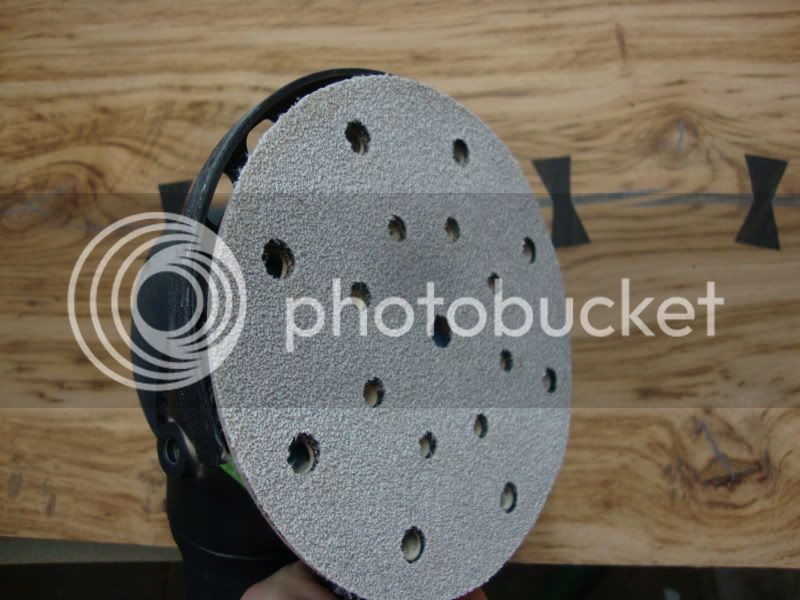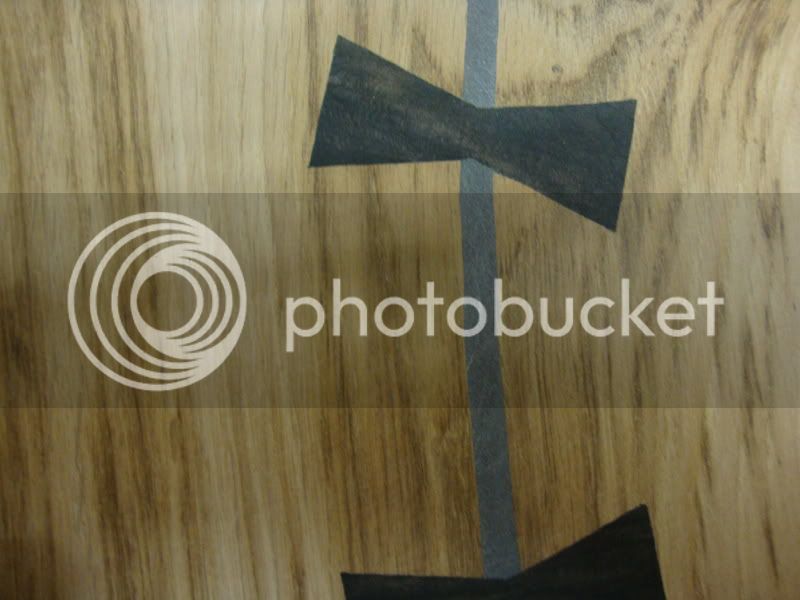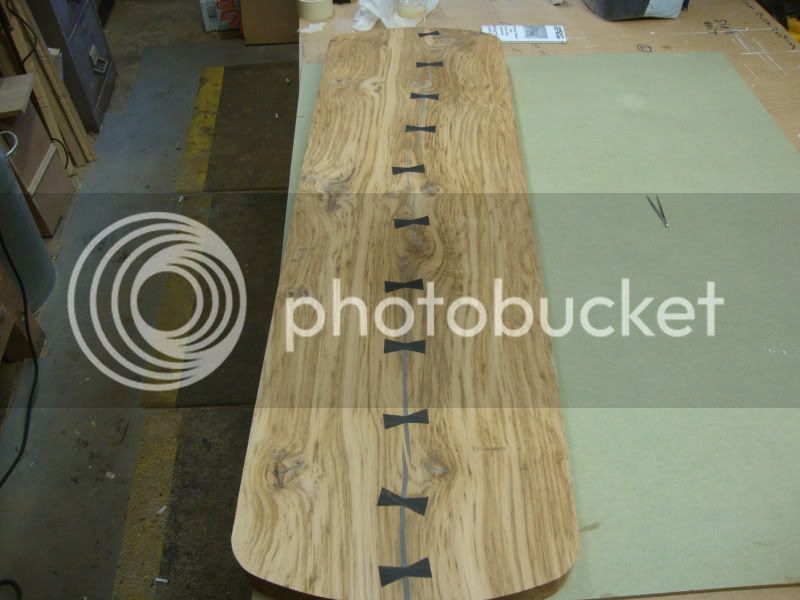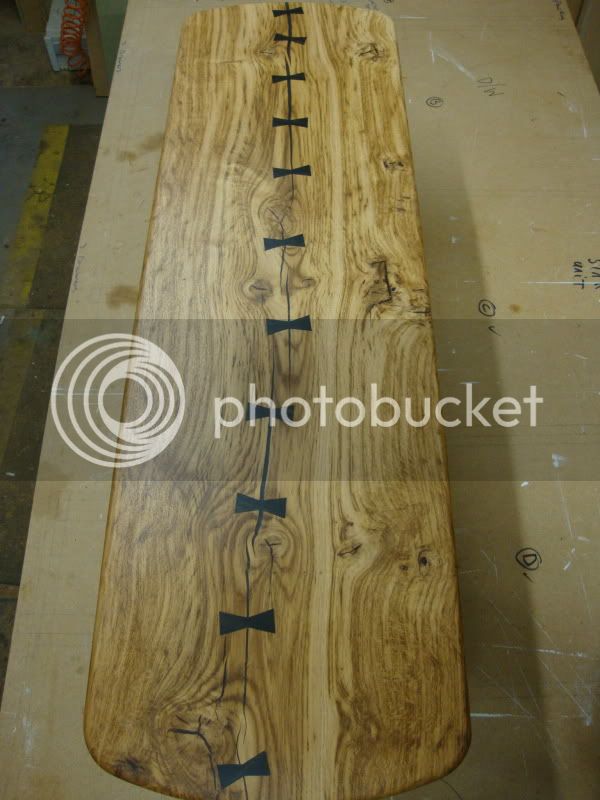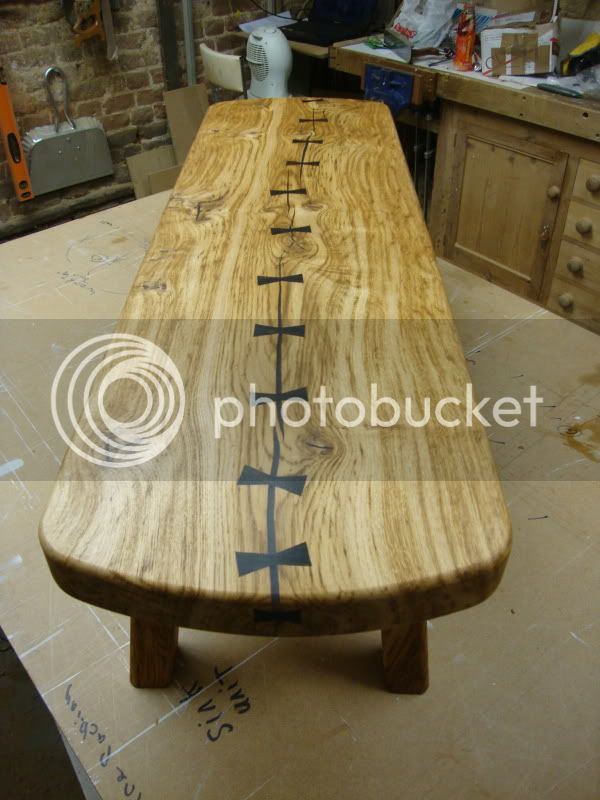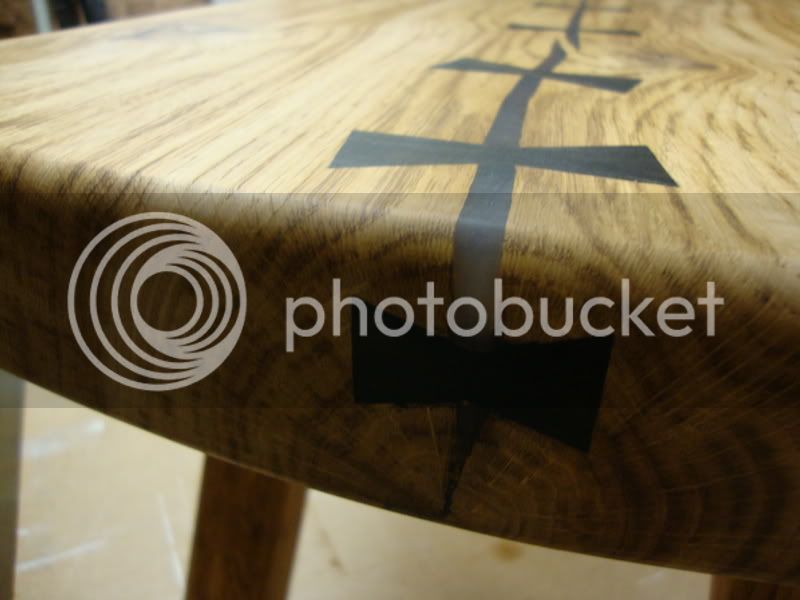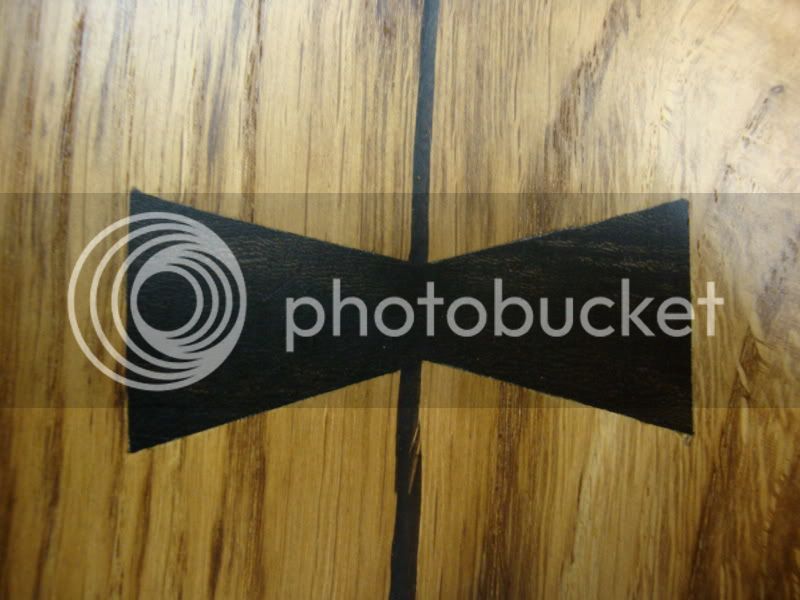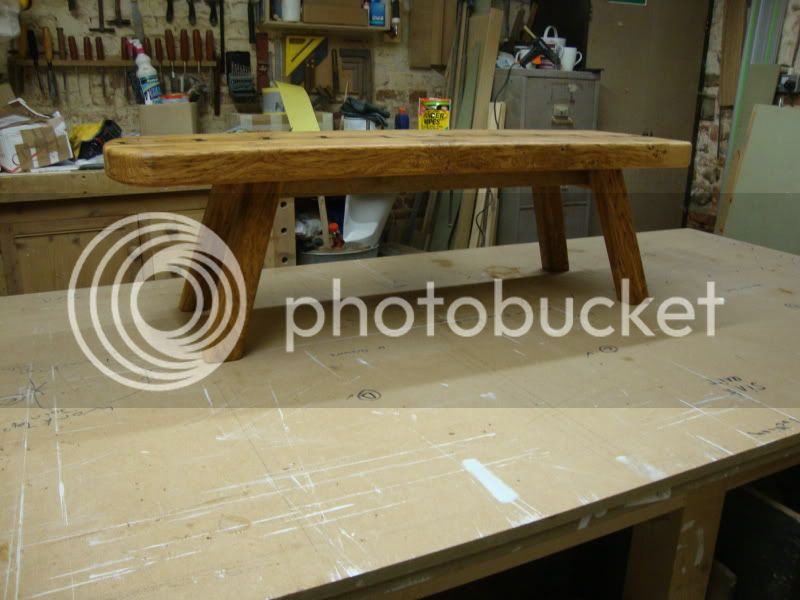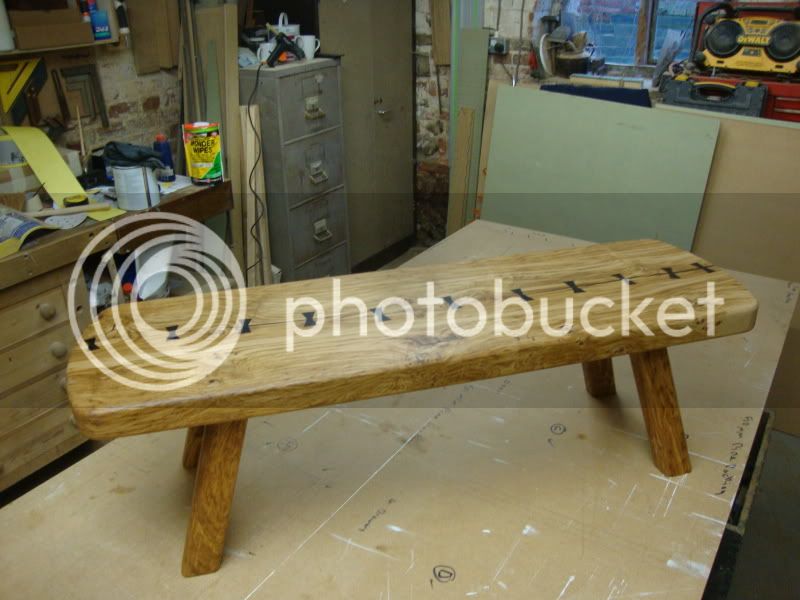mtr1
Established Member
Been a while since I posted a project, anyway here is one I'm doing at present...
I have had this board of oak for some time, always with a mind to making a coffee table when I moved into my house. Anyway here's a few wip pics.
Start with a rough board, and cut to length for the top, legs, and rails.
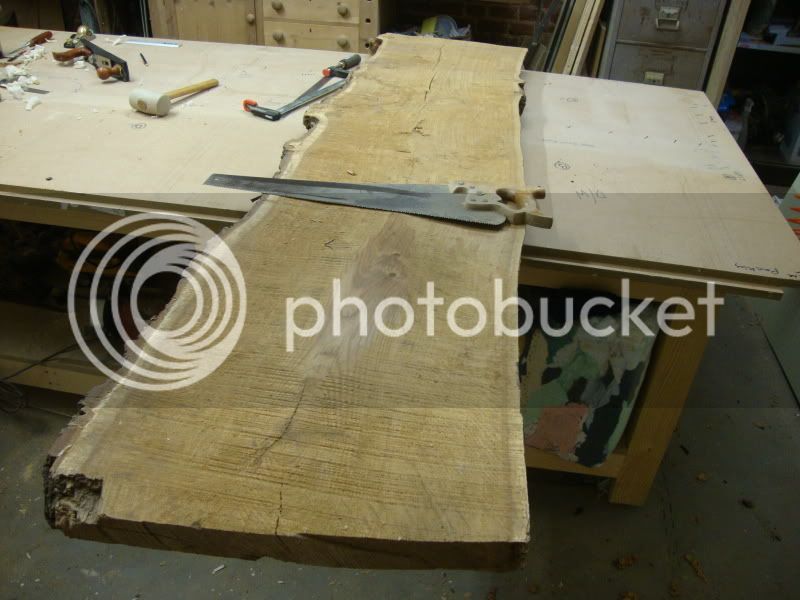

I did toy with the idea of leaving the wane on but would be left with rough edges, so with my 2yr old running about I thought not.
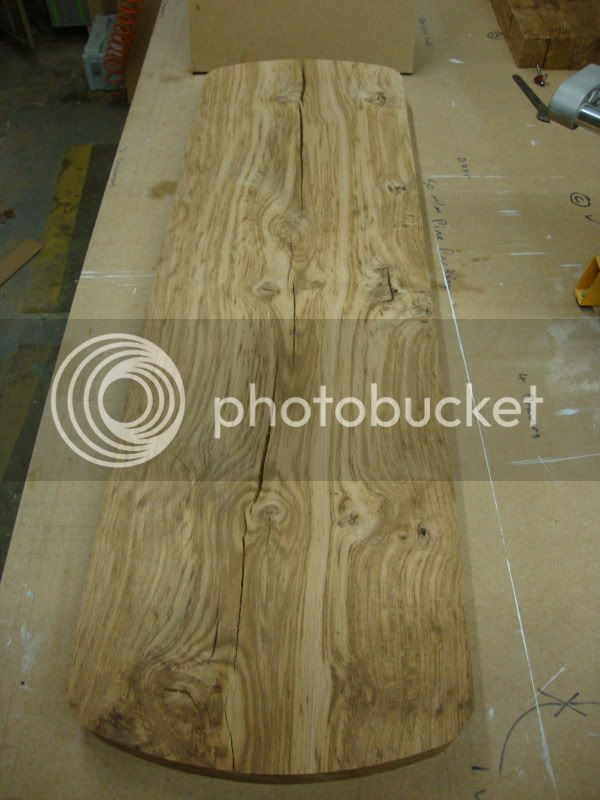
This board still has plenty of character, with some large splits to deal with.
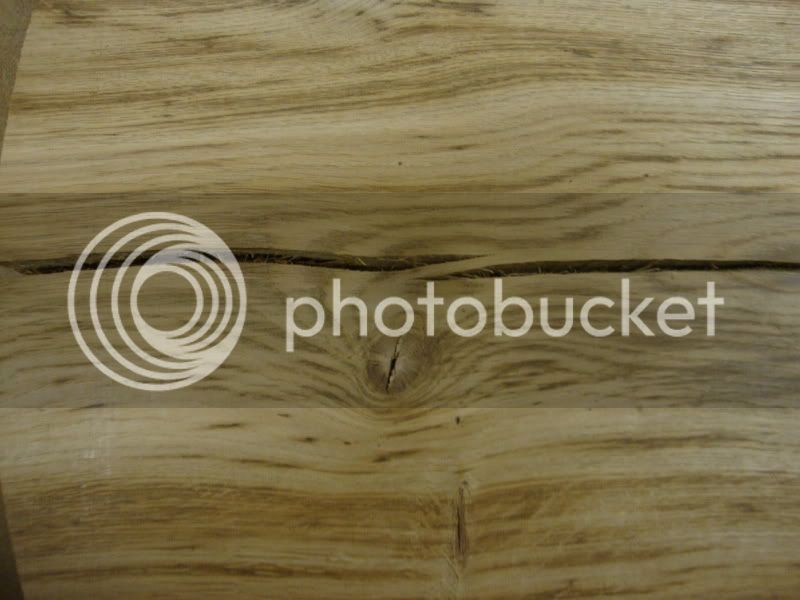
Better start stiching...
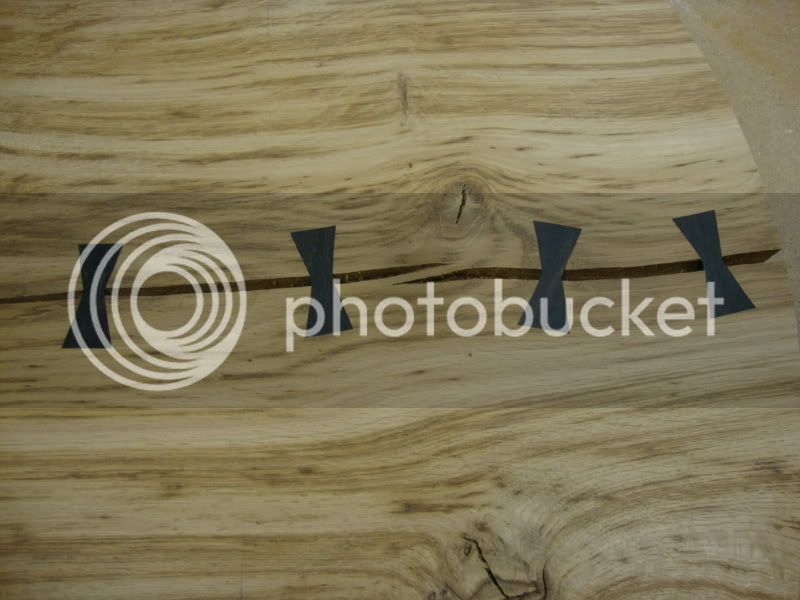

Now to stablise the splits using west's system epoxy resin.
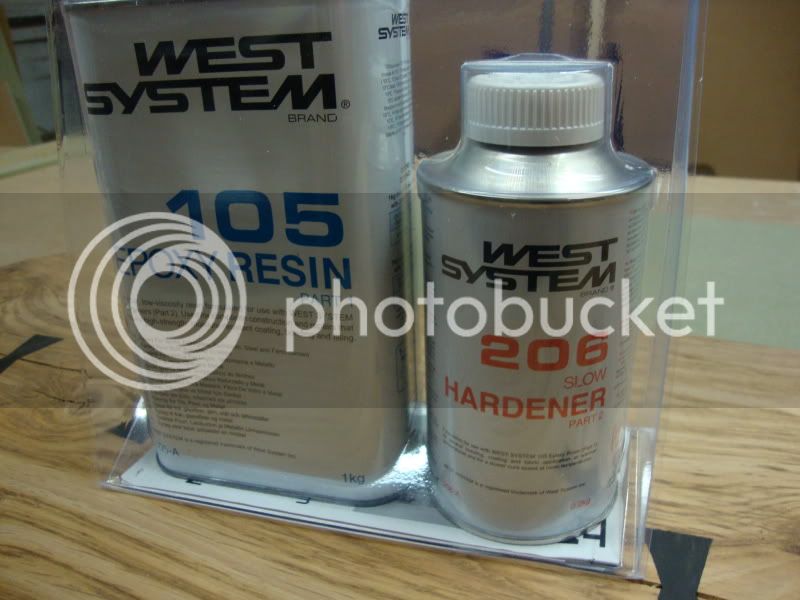
And pour..
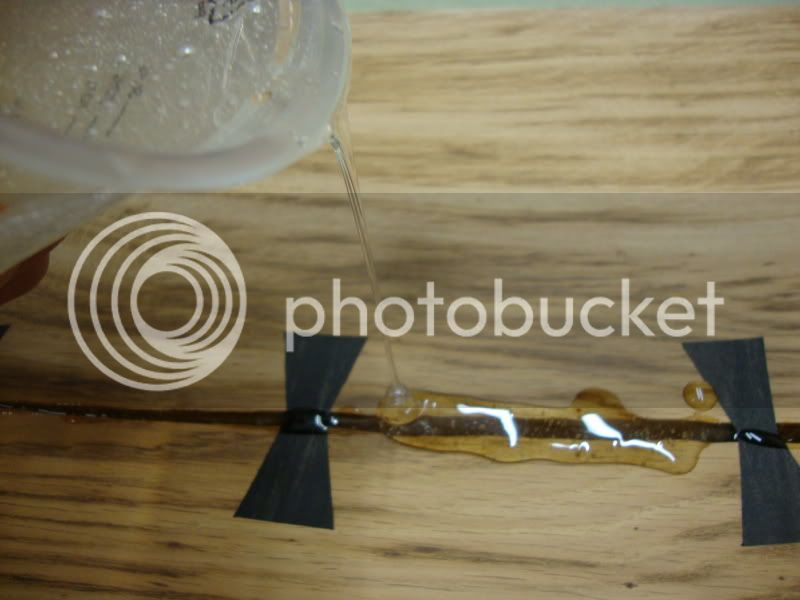
I need to stand over this and prick all the air bubbles coming up, and then re-pour the voids left behind.
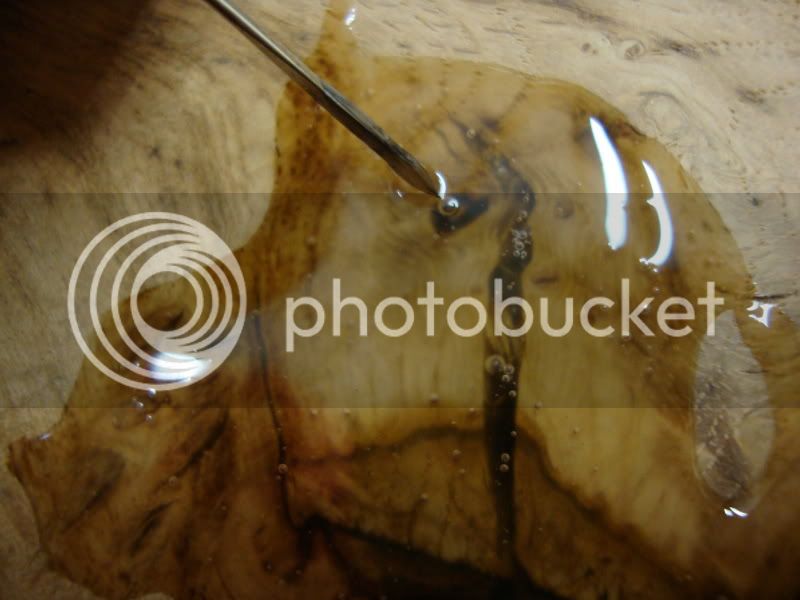
You have a window of about 20 mins so make sure you have enough to re-fill any voids.
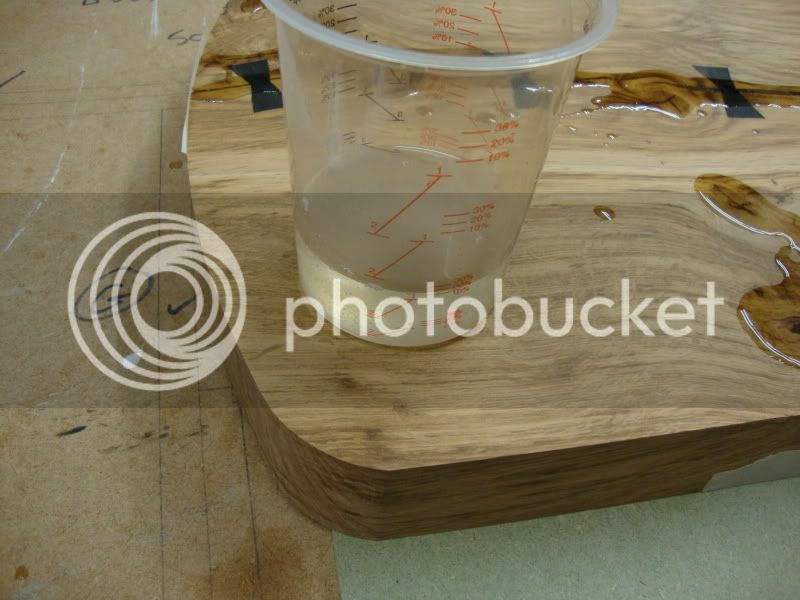
All done..

Onto the base..
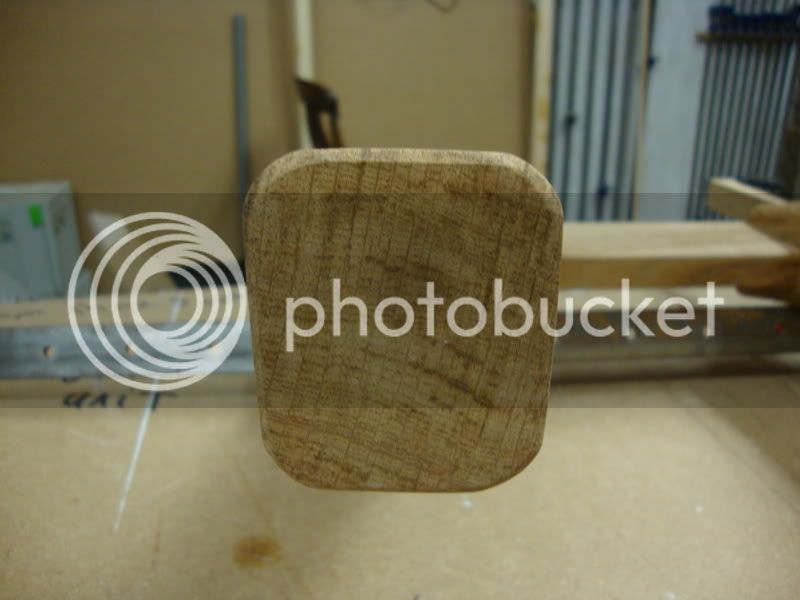
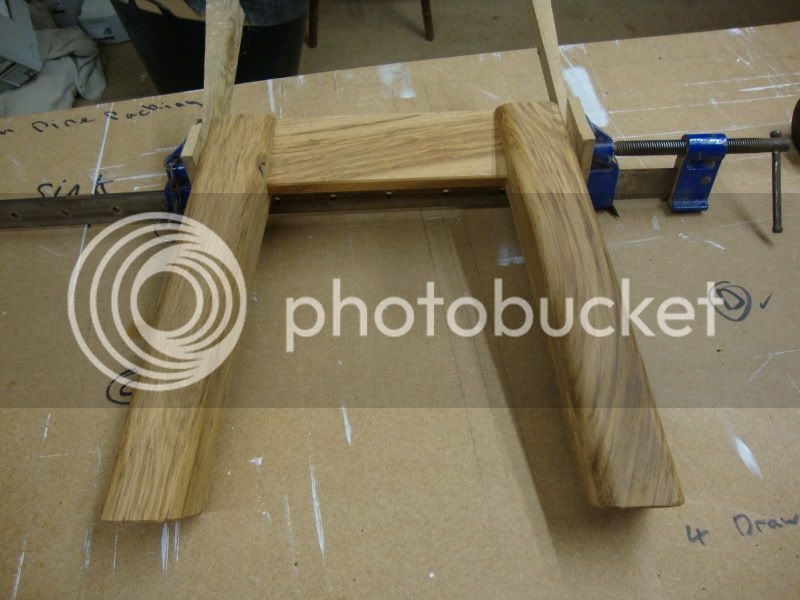
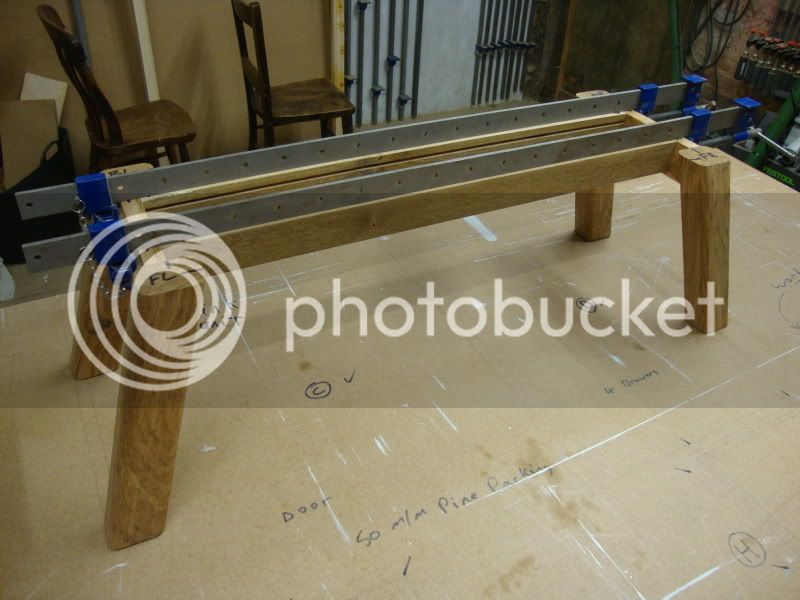
Thats about as far as I've got so far, thanks for looking.
I have had this board of oak for some time, always with a mind to making a coffee table when I moved into my house. Anyway here's a few wip pics.
Start with a rough board, and cut to length for the top, legs, and rails.


I did toy with the idea of leaving the wane on but would be left with rough edges, so with my 2yr old running about I thought not.

This board still has plenty of character, with some large splits to deal with.

Better start stiching...


Now to stablise the splits using west's system epoxy resin.

And pour..

I need to stand over this and prick all the air bubbles coming up, and then re-pour the voids left behind.

You have a window of about 20 mins so make sure you have enough to re-fill any voids.

All done..

Onto the base..



Thats about as far as I've got so far, thanks for looking.


































